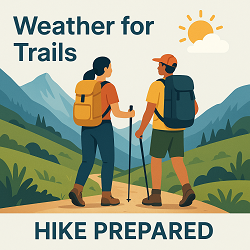Wildwood, TX Weather Forecast and Current Conditions
Current Conditions From Nearby Station Switch to Metric Units
Feels Like 65°F
at
Current Conditions From Nearby Station Switch to Metric Units
Feels Like 65°F
at
Point Forecast at a Glance







7-Day Temperature Trend
Week Ahead Summary
High temperatures drop from 87°F to a low of 60°F, then recover to 82°F by week's end. Dry weather expected throughout the week.
Climate Context
This week's forecast shows temperatures running 5°F above the historical average for November. Normal highs for this period are around 71°F with lows around 49°F.
This Date in Weather History
1913 - The Great Lakes Storm of November 7-13, 1913, was a blizzard with hurricane-force winds that devastated the Great Lakes Region, sinking as many as 19 ships and stranding 19 others. This storm would be the deadliest and most destructive natural disaster ever to hit the Great Lakes.
More on this and other weather history
Wildwood, TX 7 Day Weather Forecast Details
Saturday Nov 8

Day: Widespread fog before 9am. Mostly sunny. High near 87, with temperatures falling to around 82 in the afternoon. Southwest wind 0 to 5 mph.

Night: Mostly clear, with a low around 55. North wind 0 to 10 mph, with gusts as high as 20 mph.
Sunday Nov 9

Day: Sunny. High near 72, with temperatures falling to around 63 in the afternoon. North wind 10 to 15 mph, with gusts as high as 30 mph.

Night: Mostly clear, with a low around 37. North wind 5 to 10 mph, with gusts as high as 25 mph.
Monday Nov 10

Day: Sunny, with a high near 60. North wind 5 to 10 mph, with gusts as high as 20 mph.

Night: Clear, with a low around 34. East wind around 0 mph.
Tuesday Nov 11

Day: Sunny, with a high near 71. South wind 0 to 10 mph, with gusts as high as 20 mph.

Night: Mostly clear, with a low around 52. South wind 0 to 5 mph.
Wednesday Nov 12

Day: Mostly sunny, with a high near 80. South wind 0 to 5 mph.

Night: Mostly clear, with a low around 57.
Thursday Nov 13

Day: Mostly sunny, with a high near 81.

Night: Mostly clear, with a low around 57.
Friday Nov 14

Day: Sunny, with a high near 82.

Night: Mostly clear, with a low around 58.
Sun & Moon Monthly
Sunrise 6:39 AM
Sunset 5:26 PM
Last Light 5:51 PM
Moonset 10:22 AM

Contiguous United States Extremes
Fri's High Temperature
99 at 2 Miles North-northeast Of Lapuerta, TX and Zapata, TX
Sat's Low Temperature
7 at 20 Miles West-southwest Of Dubois, WY
Weather Folklore
Long foretold, long last; Short notice, soon passed.

Current subscribers - login to your ClearSky account
About Wildwood, TX
Content from Wikipedia, licensed under CC BY-SA 3.0.
How We Provide Better Local Weather
Current conditions: We use the nearest available station to your location - including professional MESONET/MADIS and local weather stations - often miles closer than regional airports.
Forecasts: National Weather Service point forecasts predict for your specific area, not broad regional zones, making them far more relevant to your location.

